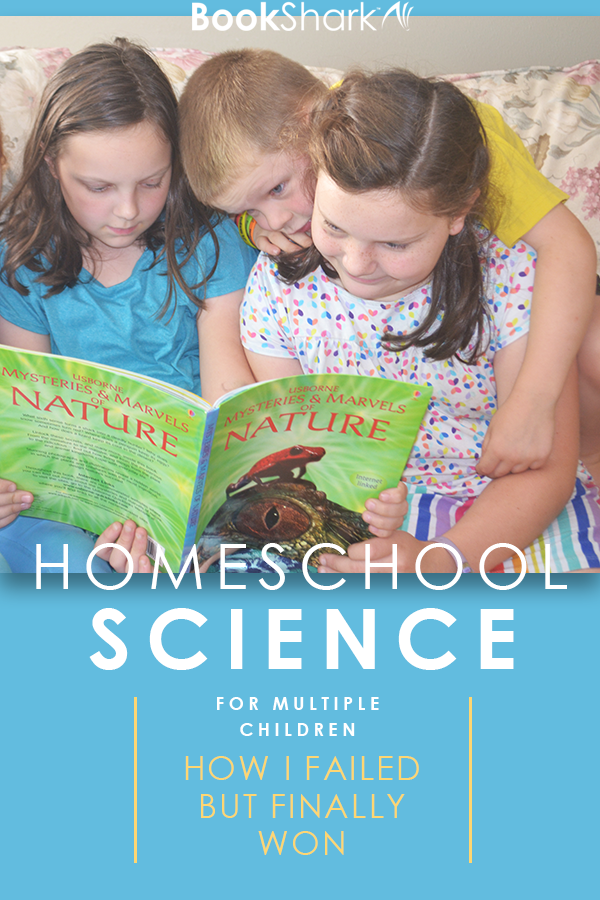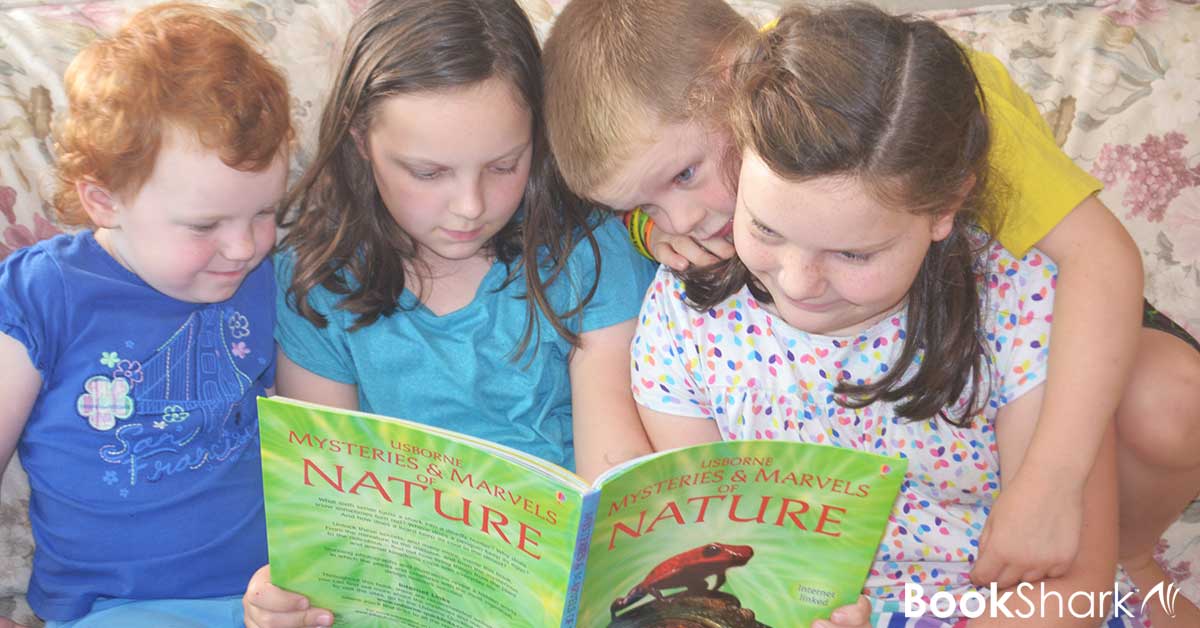With seven years of homeschooling I’ve racked up more than a few successes and failures, but nothing has been so black and white as our science journey. I’m sorry we wasted so much time but grateful we’ve finally found our perfect science fit. Here are six tips that would have gotten us learning and loving science much sooner.
#1 FAIL: Keep Using Science Curriculum No One Likes
We started out doing science with a grade-specific textbook for our oldest daughter. As time marched on and we added another student, we discovered that juggling two science programs was possible. I would sit down with each girl separately to read the assigned pages and ask the coordinating comprehension questions. But there wasn’t ever any additional discussion. They didn’t talk to each other about what they were learning, and they weren’t ever waiting at the door when their dad got home, bubbling with excitement over the new information they had learned.
Our time doing science didn’t cause any sparks; it was clear that we were just serving our time in order to check science off the daily to-do list.
Unfortunately, there seemed to be a disconnect between my kids’ innate interest in all things animal, weather, or nature-related and how disinterested they were during our science time. It didn’t make sense, but we kept plodding on.
#2 FAIL: Stop Doing Science Altogether
The walk from the couch to the school bookshelf took approximately seven steps when it was time to start art or literature. Oddly enough when it was time to grab a science or handwriting book, the floor expanded to approximately seven hundred foot-draggy steps, complete with moaning.
Ultimately, we threw in the towel when our third child, accurately dubbed The Tornado, skipped walking and graduated right to running at one. I didn’t have the time or energy to keep multiple science plates spinning, especially with the song and dance required to keep my kids motivated. To be honest, I wasn’t all that excited about those science textbooks either, and I couldn’t fabricate enough curiosity for all of us while chasing The Tornado.
We took a break from the textbooks, which meant stepping back from science, too.
#3 FAIL: Attempt to Design a Whole Curriculum from Scratch
Our break didn’t last very long since I couldn’t shake the feeling that I was letting my kids down by leaving big gaps in their education without science.
I tried following several book lists and checking out science-themed books from the library, but that required lots of free mom-time I didn’t have. I spent too many precious hours trying to figure out charts of topics, wondering if I was missing a major -ology.
The books we did bring home, however, were devoured without any pushing on my part. We were getting closer to a solution. I sensed that winning was just around the corner.

#1 WIN: Trust a Solid Curriculum Plan
Reading about another family’s success with BookShark this past spring got my curriculum-investigating wheels turning. It didn’t take long to see that it might offer a solution for our science-loving, but textbook-hating, multi-level family.
We settled on one science program that we’d all do together BookShark’s Science D. My kids clock in at ages 10, 9, 6, 4, and 1 1/2. It’s already a zoo, even before baby number six arrives this winter. The option of doing science as a family with a single science program is ideal.
Spiral Science Homeschool Program
Based on our experience, I knew that a literature-based, hands-on program would work well for our family. What I didn’t realize was how BookShark’s spiral approach is perfect for multi-level families like ours.
With the spiral approach, students explore a wide range of content with the understanding that they will cover those same topics in greater depth several times in the future. My school-age children who can’t read can still listen and help us complete the experiments without being shamed for not being able to answer all the same questions as their older siblings.
The best part? I don’t have to organize that master plan. I don’t have to remember when or how to cover topics. Experts have already thought through exactly when to cover and re-cover every topic. It’s one less thing (more like one hundred fewer things) for me to worry about.
#2 WIN: Go Beyond the Textbook
In my past homeschool science teacher life, I wanted to figure out appropriate experiments or find the perfect coordinating videos online. But it just took too much time. I half-heartedly checked out some hands-on science books from the library, flipped through them, and quietly slipped them into the return box without showing the kids, feeling like a failure for not doing more.
By blending hands-on activities and experiments, high quality literature, and videos, all my kids can get something out of what we’re doing this year with BookShark. Obviously my preschooler and my middle schooler won’t finish the year with all the same factoids floating around in their minds, but they will have memories of completing experiments together.
They each glean what they can from the books we read, and I know that they’re internalizing so much more than they would otherwise.
#3 WIN: Have Fun
We spent far too long dreading science in our homeschool. I reached that sorry conclusion when I was unpacking all our BookShark science supplies for this year while my kids looked on. They weren’t drooling -because that would be weird -but they were pretty much drooling. They were so excited to see how the materials in the little supply box were going to get put to use, and I had to squirrel away the included books so they wouldn’t be read secretly under covers in the dead of night with a flashlight ahead of time. They flipped out at the thought that sometime this year we would be growing our own popcorn. Popcorn! When my husband came home that night, he could barely squeeze inside due to four little people at the door, bursting to tell him about all that science holds for us this year.
The moral of our story is that we can win at science whether we have one child or ten, if only we just give them the right tools to enjoy it.

About the Author
Alicia Schonhardt lives in Iowa with her husband and five homeschooled kids. She loves reading aloud with all the right voices and pretending to be crafty. She is not-so-great at planning and organization but dabbles in minimalism, so it isn’t quite so tricky.
With two medically needy kids, Alicia strives to choose happiness even when things are hard. She blogs at Sweeping Up Joy, about finding beauty and humor in life right now, even when it’s hidden behind piles of laundry and chewed up books.



